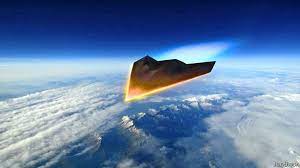Avangard : Hypersonic Glide Vehicle

Russia’s rocket forces loaded an intercontinental ballistic missile equipped with the nuclear-capable “Avangard” hypersonic glide vehicle into a launch silo in southern Russia recently.
- The Avangard is a nuclear-capable, hypersonic boost-glide vehicle (HGV) developed by the Russian Federation.
- It was developed as part of the top-secret Project 4202 and given the codename Yu-71.
- It was one of six “next generation” weapons described by Russian President Vladimir Putin during a speech in March 2018.
- It has a range of over 6,000 km, weighs approximately 2,000 kg, and can carry a nuclear or conventional payload.
- It is carried on an intercontinental ballistic missile (ICBM).
- It has “a short wedge-shaped design” which does not contain a separate propulsion system, relying on gravity and its aerodynamic features to maintain velocity after an initial boost.
- The HGV is carried to a sub-orbital altitude of around 100 kilometres (62 miles) by the carrier missile before being released.
- It then enters into a “cruise mode” before re-entering the atmosphere and accelerating to claimed hypersonic speeds of up to Mach 27 (about 32,000 kilometres per hour).




